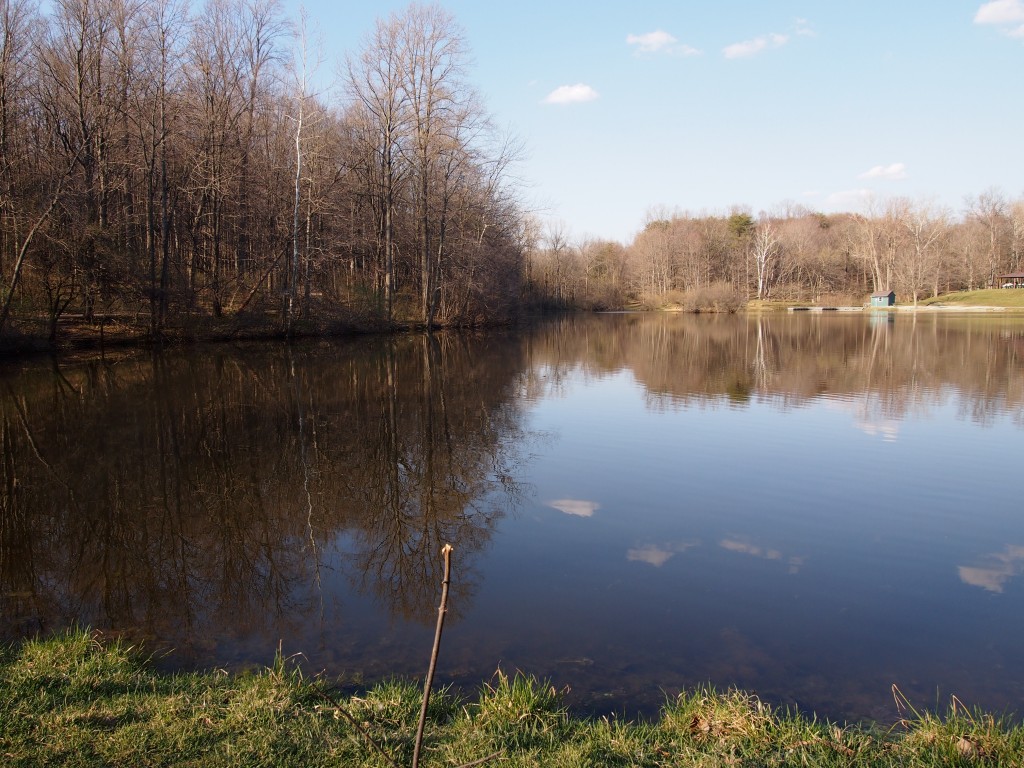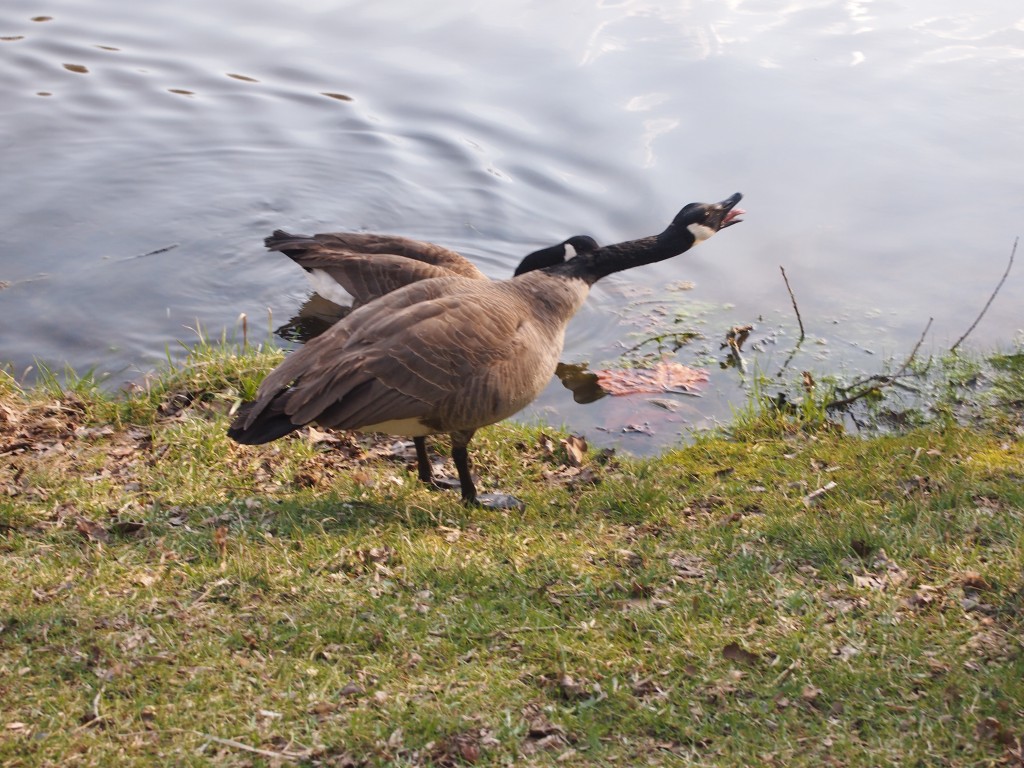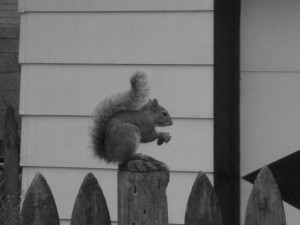Besides being Good Friday, April 18 this year had a good Friday afternoon, as warm as a spring day sometimes is. It was a good day to visit Eagle Creek Park, in northwest Marion County, Indiana, which counts as an Indianapolis city park, though it’s much more like a forest preserve. It’s slightly hilly, forested, and features a number of small lakes.
The smallest of these, I think, is Lilly Lake. We have to like a name like that, though in fact it must be named after one or another of the Lilly pharmaceutical family, whose land this used to be. We parked nearby and took a stroll around Lilly Lake. It was the picture of an early spring day: puffy clouds, green grass, the smallest of buds on the trees.
 Besides being a pleasant setting on a warm day, I wanted to come because we’d been there before. Back in early 1999, we did a similar short trip to Indianapolis, and just before we left town, we stopped at Eagle Creek Park, and took a stroll around Lilly Lake. It had been a wet spring, or at least wet recently, and near the edge of the lake was a muddy patch of ground.
Besides being a pleasant setting on a warm day, I wanted to come because we’d been there before. Back in early 1999, we did a similar short trip to Indianapolis, and just before we left town, we stopped at Eagle Creek Park, and took a stroll around Lilly Lake. It had been a wet spring, or at least wet recently, and near the edge of the lake was a muddy patch of ground.
Lilly, who was two years old then, stepped into the mud without warning and immediately found her feet stuck. She pulled and pulled and, getting nowhere, burst out crying. Time for Dad to step in – figuratively, since I didn’t need to physically step in the mud. I reached over and picked her up. Her little boots stayed in the mud, to be retrieved separately. The whole incident lasted maybe 30 seconds, but somehow I haven’t forgotten. One of those things.
This time around, with two somewhat older daughters, we had no mud incidents.

